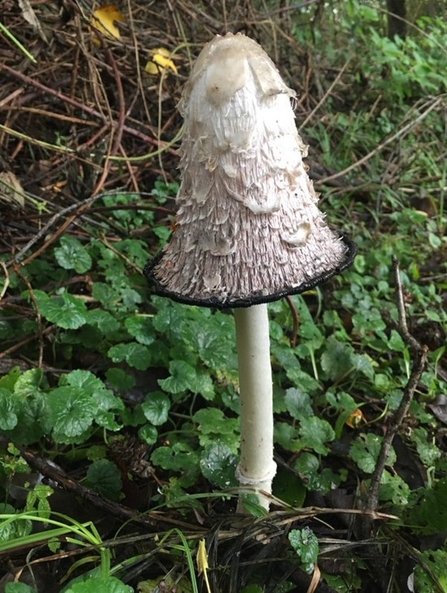Weekly wild news from our reserves - 16 October
Shaggy inkcap - Tom Hibbert
West Suffolk Sites Manager, Will Cranstoun, continues to highlight the abundance of fungi on show at this time of the year, including the out-of-this-world looking earthstar. ‘Initially resembling a small brown bulb after it splits open into pointed rays, the collared earthstar is star-shaped. As the rays continue to turn back on themselves, they create the ‘saucer’ which the round fruiting body sits on. You’re most likely to see one in woods with deciduous, hardwood trees, especially those with lots of leaf litter. They can also be found under coniferous trees, in scrub and along roadside hedgerows, especially on sloping ground. Its generic name ‘Geastrum’ originates from 'Geo' which means earth, and ‘astrum' which means a star.’

Collared earthstar at Lackford Lakes - Will Cranstoun
‘The shaggy inkcap is an unmistakable fungus’ says Will - ‘its tall, white, shaggy cap providing this name and also others, such as 'lawyer's wig' and 'shaggy mane'. It is widespread and common on roadside verges, parkland, grassland, gardens and nature reserves, like these ones found at Lackford Lakes!’

Shaggy inkcap at Lackford Lakes - Will Cranstoun
Fungi are neither plant or animal, and get their nutrients and energy from organic matter, rather than photosynthesis like plants. It is often just the fruiting bodies, or 'mushrooms', that are visible to us, arising from an unseen network of tiny filaments. The fruiting bodies produce spores for reproduction, although fungi can also reproduce asexually by fragmentation.
Autumn is the perfect time for a fungi foray on our nature reserves - please just look, do not touch or eat! Visit www.suffolkwildlifetrust.org/fungi to find out more.
Before and after rotational scrub clearance at Hen Reedbeds
Warden Jamie Smith and his team have been busy with rotational scrub clearance at Hen Reedbeds. Scrub is brilliant for wildlife, but a small area of rotational clearance is beneficial to the site as it allows more light to penetrate the dykes, and also reduces leaf fall into the water, which provides optimum conditions for aquatic plants and invertebrates to thrive. The resulting logs and brash were left in piles to create a bug hotel and hibernaculum for reptiles. This essential habitat management work has the added bonus of opening up a lovely view across the reedbed, as shown in these before and after photos.










